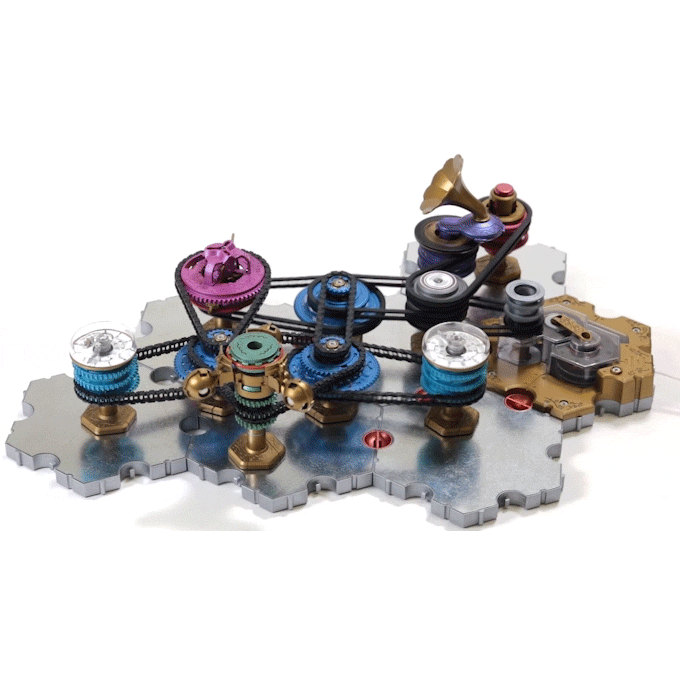It seems like a lifetime away that my chum Paul Boswell and his wife Alyssa launched their Spintronics Kickstarter. I just checked through the archives to discover that I last wrote about this on 20 May 2021. “O-M-G,” is all I can say. Where does the time go?
Getting Spintronics up and running took a lot more effort than was originally anticipated (all this was detailed in the numerous Kickstarter updates). Once everything was tickety-boo, Paul and Alyssa—in the form of their company, Upper Story—had to ship the finished product to the 9,040 backers who had pledged $1,375,068 (I just checked the Spintronics Kickstarter Webpage).
The reason I’m waffling on about this here is that I just heard from Paul that now, for the first time ever, Spintronics is in stock worldwide. He says they have 36,000+ sets available for order but—if past experience is anything to go by—these won’t last long.
Personally, I think Spintronics is an awesome educational experience that would make an awesome gift for kids of all ages from 8 to 80+. Players build mechanical circuits that run just like electrical ones. As part of this, they discover interesting and clever tricks of circuitry, not through abstract math, but by playing with tangible circuits. Even if you can’t justify buying one for yourself, I bet you know a kid or a young adult who—if you bought it for them—would let you play with it.
On the off-chance you aren’t already familiar with the concept of Spintronics, let me briefly expound, explicate, and elucidate (fear not, I’m a professional). Instead of electrons flowing through wires, chains flow through circuit components like mechanical resistors, capacitors, inductors, transistors, and switches.
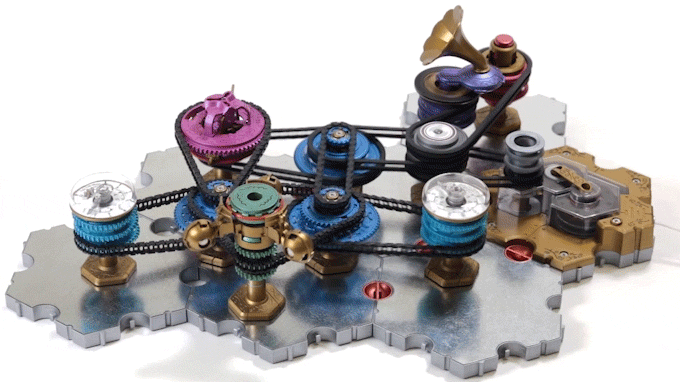
Simple oscillator (Image source: Upper Story)
I don’t care what anyone says, I think this is as cool as cool can be. Players [remember that this is a puzzle game] can “feel” the pull of voltage and “see” the flow of current as they discover electronics in a tangible and deeply intuitive way.
Let’s take a brief spin (no pun intended) through the spintronic components, not least that I LOVE Paul and Alyssa’s animated images. Let’s start with the spintronic battery, which powers your spintronic circuits. You charge the battery by pulling the string. The battery pushes the chain with a constant force (voltage), while a built-in mechanical circuit breaker automatically shuts it off in the event of a short circuit.
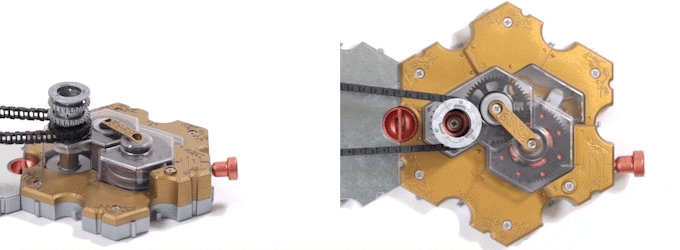
The spintronic battery (Image source: Upper Story)
Next, we have the spintronic switch that opens and closes circuits. Push it once to open the circuit. Push it again to close it.
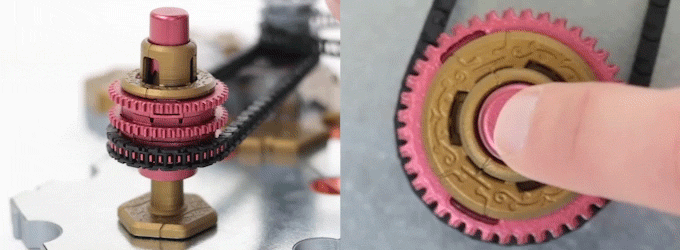
A spintronic switch (Image source: Upper Story)
The spintronic junction allows the current to branch, just like an electrical junction of three wires. Each sprocket is one of the three paths for current.
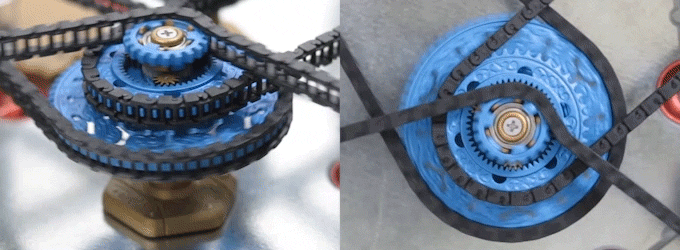
A spintronic junction (Image source: Upper Story)
Spintronic resistors resist the flow of current. There are three different values in the image below: 1000 Ω (left), 500 Ω (middle), and 200 Ω (right).
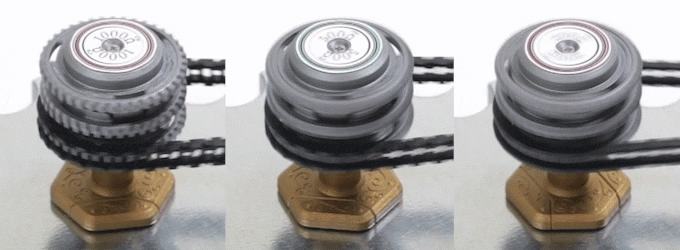
Spintronic resistors (Image source: Upper Story)
The spintronic capacitor stores energy like a spring. It also doubles as a spintronic voltmeter. The gauge on top indicates the voltage across it.
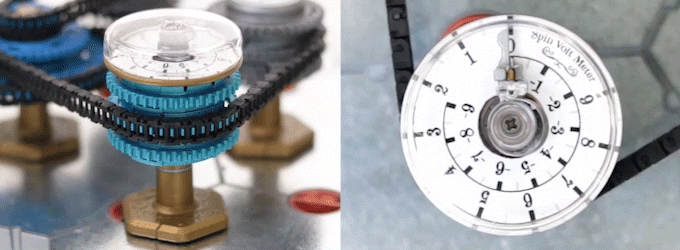
A spintronic capacitor (Image source: Upper Story)
The spintronic inductor builds momentum. It’s heavy, so it takes a lot of energy to get it moving, but once it’s going, it doesn’t want to stop!
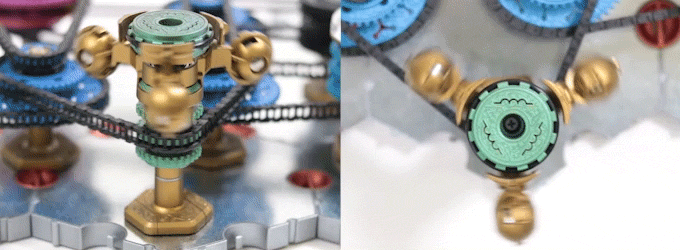
A spintronic inductor (Image source: Upper Story)
The spintronic transistor is a voltage-controlled resistor. The higher the voltage on the top sprocket, the lower the resistance of the bottom sprocket.
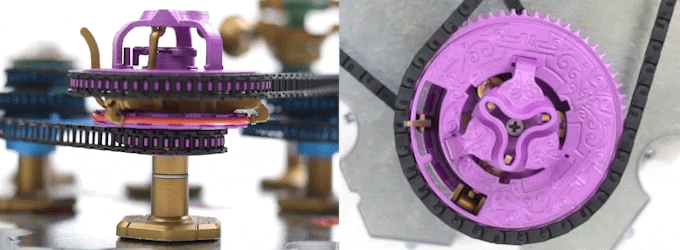
A spintronic transistor (Image source: Upper Story)
The spintronic ammeter lets you hear the current. The more the current, the higher the pitch.
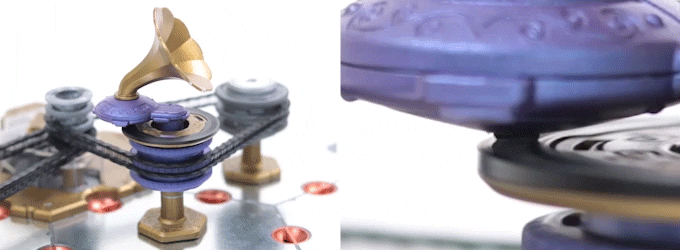
A spintronic ammeter (Image source: Upper Story)
Last, but certainly not least, Paul’s even created an online spintronics simulator that allows you to visualize your creations before committing them to the real world.
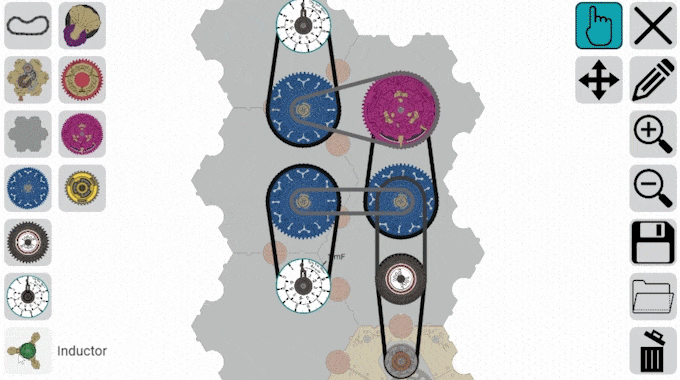
The spintronic simulator (Image source: Upper Story)
As you’ll see from the website, Spintronics is presented as two kits called Act One and Act Two, each of which comes with its own set of parts and associated puzzle book (note that the parts from the Act One kit are required for use with the Act Two kit).
There’s also something called the Spintronics Power Pack. In fact, this is an expansion kit that includes more components, another battery (so you can drive your circuits with more power), and a new puzzle book containing ten additional puzzles.
Suffice it to say that I have the “Full Monty,” as it were: Spintronics Act One, Spintronics Act Two, and an Additional Power Pack. This is going to keep me busy for months to come. How about you? With the holiday season on the horizon, can you think of anyone who might enjoy one of these bodacious beauties?


